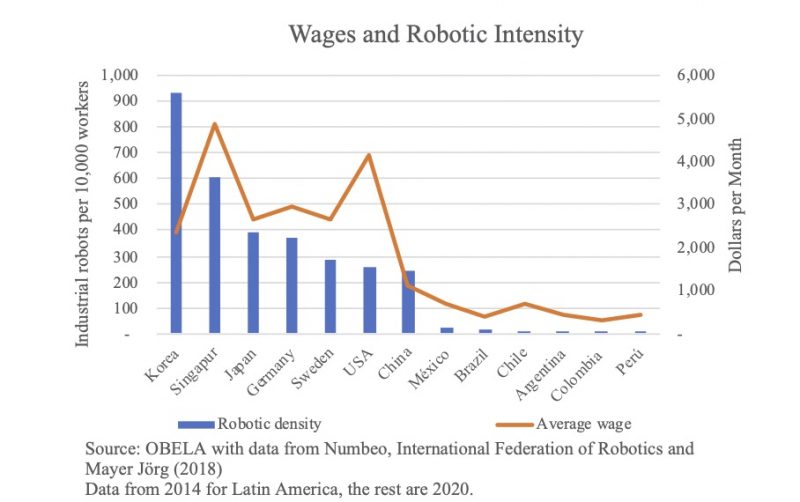Automation is the total or partial elimination of human intervention in the execution of a job. The first forms took place in the previous industrial revolutions, automation 1.0, with the birth of industry (steam engines 1760) and much later automation 2.0, the assembly line (Fordism 1910). Today it is possible to speak of electronic automation 3.0 thanks to the technological development of economies, especially mature economies (Computers 1970). Innovations have brought benefits such as growth in the profitability and productivity of firms. Still, introducing new technology accompanies essential disruptions in the labour market. Some studies project that the new wave of technological development will eventually displace many workers from productive life. Although the effects on the economy and society are still unknown, these trends may generate more significant inequalities in the labour market.
The first forms of the new artificial intelligence automation 4.0 became visible with the industrial robotics of the 1980s in the automotive industry in the United States and Japan. Some companies, such as General Motors, invested large amounts of capital in automating their activities. Still, they were not profitable because of the technology's high cost and low efficiency in terms of the workforce. Since then, the functions an industrial robot can perform have improved dramatically, and, according to McKinsey & Company, their cost has halved since 1990. It has enabled tripling the installation of industrial robots in the second decade of the 21st century, reaching labour-intensive industries such as textiles. It went from being a process seen in large companies to be available to small and medium-sized ones.
The countries leading the way in industrial automation are the developed ones, given that they have more resources and an economic environment conducive to technological development. Also, because they are the countries with the highest wages worldwide, they stimulate robotisation to reduce costs in the framework of a globalised market. Developing countries such as those in Latin America have no incentives to replace labour with capital, not even in Mexico, the most robotised country in the region, as seen in the graph. This is because it causes industries to start displacing workers. On average, employment in the industrial sector has decreased by 0.5% per year since 2008 in OECD countries, and labour productivity has increased.

Industrial robotics is not the only way to automate work. New technological developments have succeeded in combining automation with artificial intelligence (AI) and digitalisation. Digitisation is using technologies to convert data and processes into a digital format. AI is the development of algorithms that allow a computer to "learn and adapt" to its environment. These technologies combined allow for an even higher level of automation by performing activities outside the industrial domain.
In the first two decades of the 21st century, automation has permeated services, particularly repetitive and mechanical jobs, such as telephone operators, administrative services and even paralegals, i.e. low-skilled jobs. However, some studies expect jobs that require a little more ability will disappear in the coming years in wholesale, retail, management and even some nursing jobs, to name a few. Moreover, thanks to AI, it is possible to automate tasks performed by "white collar" employees, such as trading and banking. In the long term, it is a worrying trend given that, for example, more than 80% of employees in the US belong to these sectors.
New technological development has also created jobs, especially in the information and computer sectors which are higher skilled and therefore command higher salaries. Most of these require higher knowledge of digital technologies. The issue is that many of these jobs are susceptible to falling into "unconventional forms" of labour relations, such as outsourcing and uberisation. Ultimately it means degrading working conditions by lacking social protection, passing on specific costs to workers or being prone to downward wage spirals. A 2022 ILO article considers much of this work to be an extension of informality.
For developing countries in Latin America, Asia and Africa, automation will likely destroy formal jobs, which could increase the existing problem of informality in the region mentioned in previous notes. Additionally, it may lead to greater income inequality, which reflects in the social protests in these countries.









